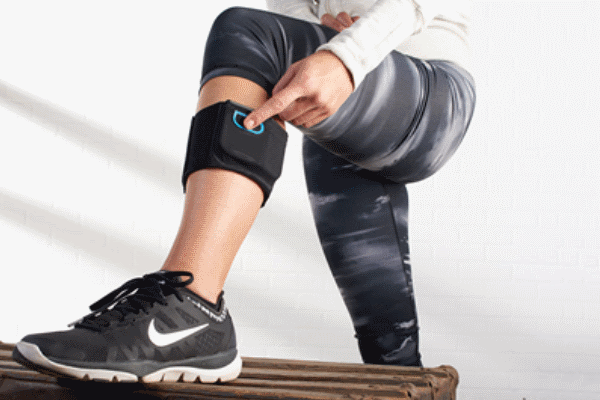Let’s Move Past Pills
“But is there real innovation in your category?” is never a question you want to hear when working at a branding and innovation consultancy, but one I heard often when I worked in pain relief. This is especially concerning when as many as 50 million people in the US alone suffer from chronic pain. And while there are more pills than seem necessary, I’m glad to see some new players in this space.
Tech Solutions
The more exciting innovations are coming from the tech world. TENS (transcutaneous electrical nerve stimulation) devices, once only found in doctors’ offices, are now prevalent in the consumer space. These wearable devices deliver low-grade electrical stimulation directly to the source of pain and block its transmission. While originally somewhat cumbersome, newer devices like Quell Wearable Pain Relief Technology almost look like sports wear, and are said to be 10 times as powerful as the typical OTC TENS device.
For more serious cases of chronic pain, there’s spinal cord stimulation (SCS) – where a small device is implanted into a person’s back. The device delivers tiny pulses to specific nerves on the spinal cord. These pulses interrupt pain signals before they reach the brain. With the growing opioid crisis, SCS can provide a viable alternative to chronic pain sufferers.
Next Up: Gene Therapy?
There are honorable mentions in other categories (see CBD and pain relief), but the most interesting pain remedy is just emerging. Some may have seen the Times article about Jo Cameron, the woman who at 71, has never felt pain – even when she was in labor.
It turns out that pain may have a genetic component. Researchers attribute Ms. Cameron’s immunity to pain to a mutation in a previously unidentified gene. If they can understand how the mutation works, they may be able to “turn it off” in chronic pain sufferers. Equally interesting is that Jo Cameron has never felt anxiety – suggesting a powerful connection between pain and emotions. While it is not surprising that feelings have a physical and emotional dimension, it is surprising to what extent that may be the case.
So is there real innovation in the pain relief category? The answer is a resounding yes.


